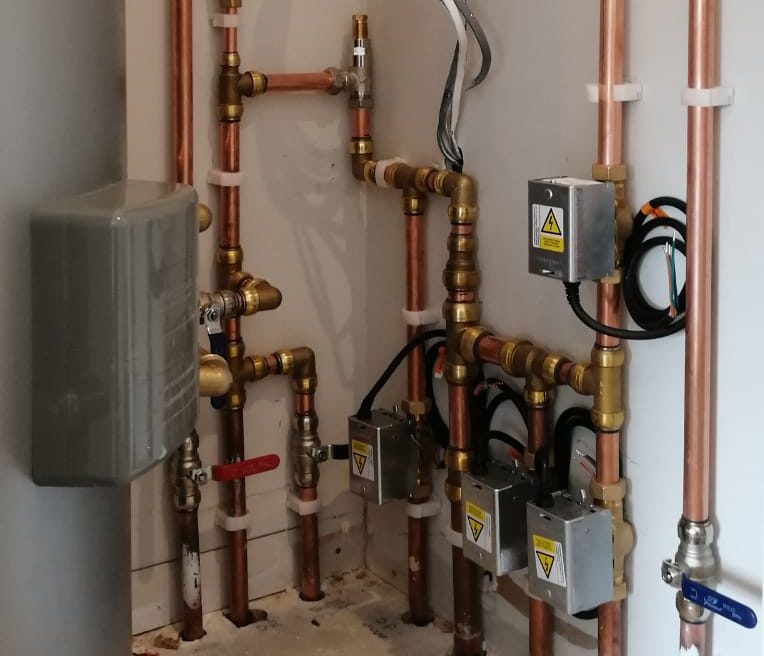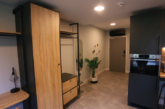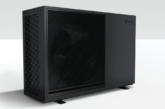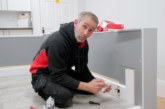
As pressurised hot water cylinders grow in popularity, Nigel Sanger, Divisional Director Technical Support from RWC looks at how housebuilders can use tempering valves as a simple failsafe mechanism to protect themselves from the risks of cylinder failures.
Even though the popularity of combi-boilers has increased, hot water storage systems still make up roughly 70% of the total UK water heating market. Particularly, demand for pressurised cylinders, sometimes known as unvented cylinders, is growing. Figures from the Association of Manufacturers of Domestic Unvented Systems suggest that the market has grown by 15% per annum since the year 2000.
Unvented systems offer an excellent choice for housebuilders looking to meet the changing needs of the marketplace, from energy and space efficiencies to meeting increased consumption patterns.
The overarching challenge for housebuilders when it comes to specifying the hot water system in the home is that the system needs to meet household water usage. However, these demands are continually shifting, with property sizes, the rise in multi-generation or multi-bathroom households, and trends towards high-performance showers all having an impact.
Pressurised systems offer a solution to these demands. Hot water is stored within the cylinder and fed directly from the cold mains water feed. The key benefit of this arrangement is the ability to deliver hot water at mains pressure to multiple outlets, so occupiers can comfortably use multiple outlets simultaneously.
Pressurised cylinders provide more space for housebuilders to work with. With lofts increasingly being used as an additional room for living or storage and town houses gaining more popularity, this means cold water, tank-fed systems, which are traditionally stored in this space, are not feasible.
Ensuring a safe hot-water supply
While specifying a pressurised hot water system in a newbuild offers housebuilders and the eventual homeowners many benefits, the fact that they operate under high-pressure makes occupants’ safety a key concern.
To ensure homeowners’ safety, most unvented systems are fitted with expansion vessels. These act as a safety mechanism, releasing mounting pressure in the system by pushing the water from the cylinder into the expansion vessel and ensuring that the unit is not damaged by the water pressure.
As well as expansion vessels, cylinders are fitted with other failsafe mechanisms too, including pressure relief and thermal relief valves. In simple terms, these valves are designed to open when the system exceeds the predetermined temperature or pressure. They help with draining off water from the cylinder through a tundish and into a discharge pipe to relieve cylinder pressure, cold water is then fed into the cylinder to replace the discharged water. By ensuring that the system is not allowed to exceed its safe operating range serious incidents such as an explosion can be prevented.
While built-in safety measures provide a degree of protection, they are primarily designed to protect the cylinder. With the trigger points set quite high, the high storage temperature can create a scalding risk long before the relief valves are triggered. In addition, these safety features can only be relied upon if the system is regularly serviced and maintained.
While regulations dictate that unvented cylinders should be serviced annually, doing so becomes the role and responsibility of the homeowner. Despite this, any issues in the short-term will likely impact the reputation of the housebuilder. To mitigate this risk, housebuilders should specify an extra level of protection in the form of a tempering valve.
For instance, if the cylinder’s pressure and temperature relief valves are set to 8 bar and 95°C respectively, the water pressure and temperature can increase up to 75°C and 9 bar without triggering the relief valves.
In this scenario, the water temperature is hot enough to cause scalding, while the pressure is high enough to cause a violent splash back against basins. This is particularly dangerous for young children and the elderly, who are more susceptible to scalding.
Tempering Valves
As an additional safety checkpoint, tempering valves such as the Heatguard Tempering Valve from Reliance Valves, can be fitted to the hot water outlet of the pressurised cylinder and cold mains water to regulate the outlet temperature. Any excessively hot water exiting the cylinder is mixed with cold water to ensure safe and stable operating temperature.
Tempering valves are pre-set and locked to 55°C, which massively reduces the chances of scalding while still ensuring that the water in the cylinder meets the required temperature to prevent Legionella from breeding. This simple and cost-effective failsafe valve offers housebuilders extra protection against some of the potential risks associated with unvented hot water cylinders.
Installing tempering valves with unvented hot water cylinders is not required by law. However, when the onus for regular servicing falls outside the realm of the housebuilders’ control, the only way to protect against future issues is to specify the use of these valves at the commissioning/installation phase.
Installing a tempering valve takes minimal time, and will not add any significant costs or delays to the overall build time. The Heatguard Tempering Valve comes complete with 22mm compression connections, making installation quick and easy. By adding an additional layer of safety, homeowners are protected from risks associated with unvented hot water systems and, crucially, housebuilders can protect themselves from potential litigation.








